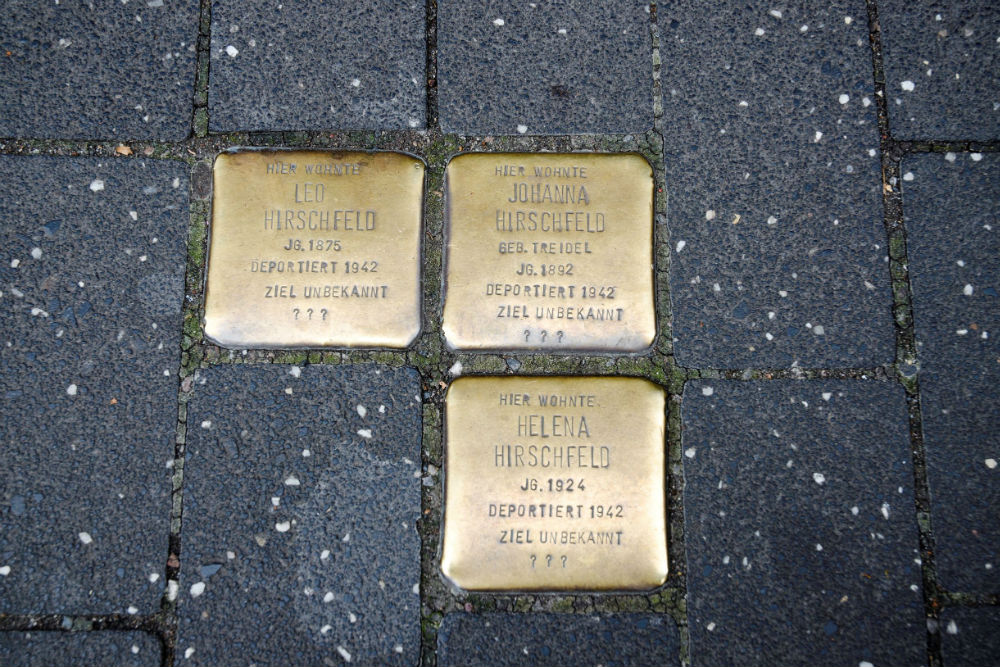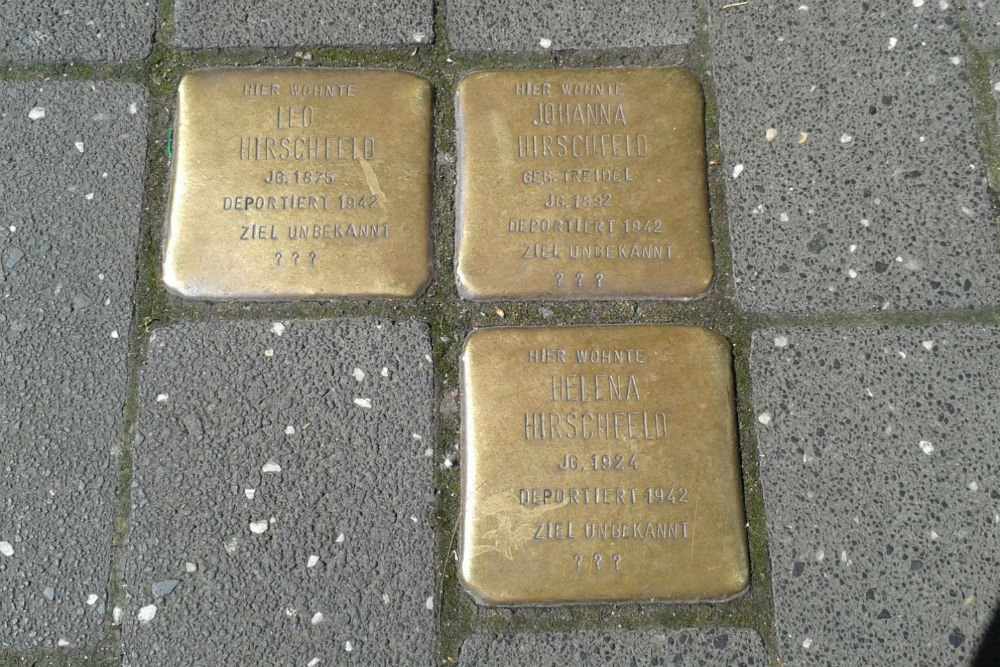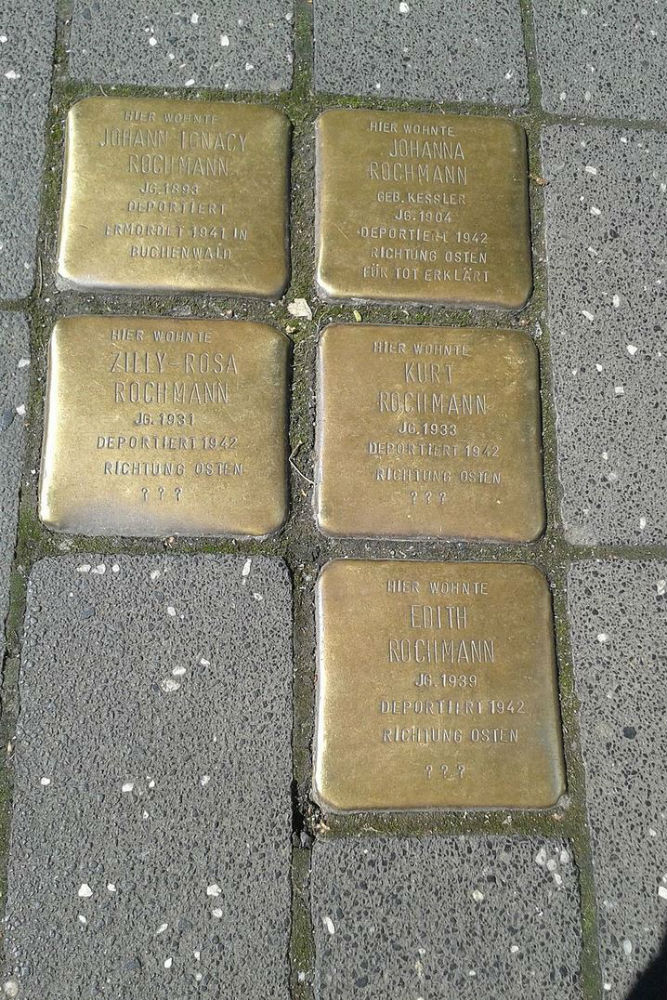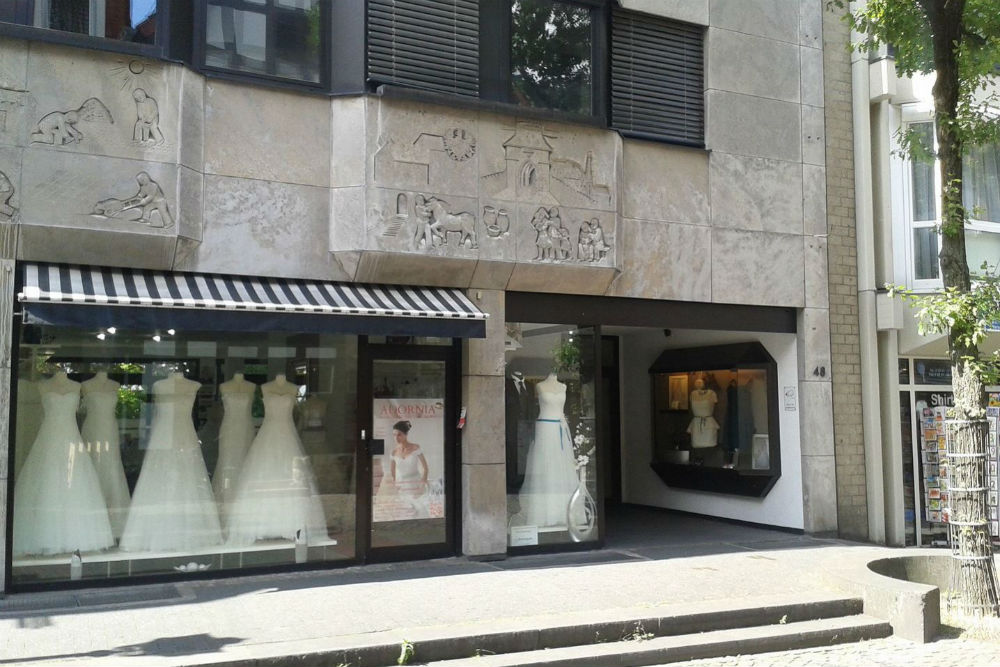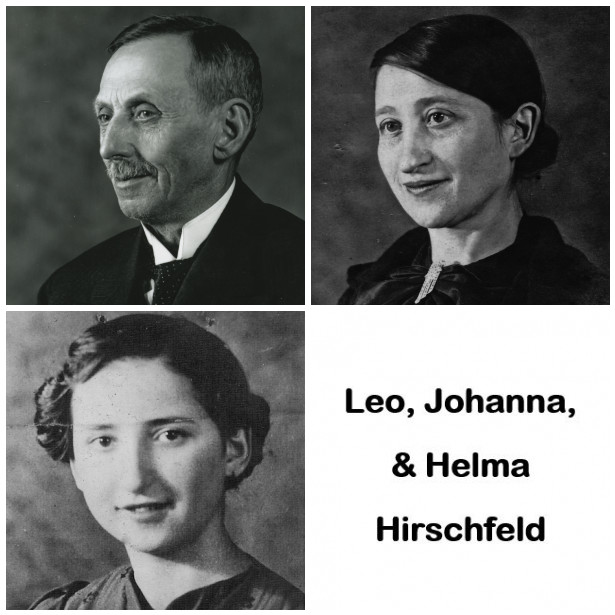Stumbling Stones Holzgasse 48
These small, brass memorial plaques (Stolpersteine or stumbling stones) commemorate:
* Helena Hirschfeld, born 1924, deported 1942, destination unknown, ? ? ? [fate unknown]
[Note that the name should be Helma Hirschfeld. See below.]
* Leo Hirschfeld, born 1875, deported 1942, destination unknown, ? ? ?
* Johanna Hirschfeld née Treidel, born 1892, deported 1942, destination unknown, ? ? ?
* Johann Ignacy Rochmann, born 1893, deported, murdered 1941 in Buchenwald.
* Johanna Rochmann née Kessler, born 1904, deported 1942 to the East, declared dead.
* Zilly-Rosa Rochmann, born 1931, deported 1942 to the East, ? ? ? [fate unknown]
* Kurt Rochmann, born 1933, deported 1942 to the East, ? ? ?
* Edith Rochmann, born 1939, deported 1942 to the East, ? ? ?
Hirschfeld Family
More information has been discovered since the stolpersteine for the Hirschfelds were installed in 2003. Leo Hirschfeld, a cattle trader, married Johanna Treidel. Their daughter Helma was born in 1924 in Siegburg. The name on her stolperstein is incorrectly "Helena." Yad Vashem and German Federal Archives records show both names: Helma/Helena. Other sources show Helma or Helena.
The German Federal Archives show that Leo, Johanna, and Helma Hirschfeld were in Much internment camp on 14-15 June 1942, and then were deported on 15 June 1942 from Koblenz-Köln-Duesseldorf to Sobibor, status "murdered." Testimony provided by a relative to Yad Vashem includes a typewritten document showing Leo, Johanna, and Helma "evacuated" on a transport from Camp Much to Bonn on 14 June 1942. Since distances were relatively short, they were probably taken from Much to Bonn (~40km), then to Köln/Cologne (~30-35km) and put on the transport to Sobibor.
Records of transport Da 22 shows it left Koblenz on 14 June 1942, arrived at 3:50am the next morning in Köln, where it picked up additional Jews from Bonn, Much, and other locations. The train went on to other towns, collecting more deportees along the way until there were over 1,000 aboard. About 100 men were taken off the train and sent to Majdanek. Everyone else was taken to Sobibor. No one on the transport is known to have survived.
Leo and Johanna’s other daughter, Ruth Hirschfeld, had escaped to England in January 1939 and survived.
Rochmann Family
Johann Ignacy Rochmann, born in Warsaw, married Johanna Kessler, born in Köln. Three children were born in Siegburg: Cilly Rosa (1931), Kurt (1933), and Edith (1939).
Interestingly, the children are in the records of the German Federal Archives while the parents are not. Yad Vashem has pages of testimony for all five Rothmanns, with some of the information inconsistent.
The German Federal Archives report that the children were deported from Bonn on 15 June1942 to Eastern Europe and were declared dead. In addition, the list of people "evacuated" from Camp Much on 14 June 1942 to Bonn includes Johanna Rochmann and the 3 Rochmann children as well as Leo, Johanna, and Helma Hirschfeld.
For Johann Ignacy Rochmann, one submitter of testimony (Fred Gottlieb, 2014) included a letter from Buchenwald addressed to Johanna Rochmann in Camp Much dated 21 Oct 1941 regarding the ashes of her husband Ignaz Rochmann who died 04 Sept 1941. Before that, Ignaz Rochmann apparently was subjected to numerous deportations – to Bentschen in October 1938 until the following summer, then Sachsenhausen June-Sept 1940, followed by Dachau July 1941, and finally Buchenwald.
For Johanna Rochmann, Gottlieb stated that she also was sent to Bentschen, then from Camp Much to Bonn and Eastern Europe. Johanna’s brother stated in his 1984 testimony that she and the children were sent to Auschwitz, but Gottlieb’s testimony and the list of "evacuees" suggest that she and the children were sent to Camp Much in 1941, then to Bonn on 14 June 1942, and deported to the East.
"Stolpersteine" is an art project for Europe by Gunter Demnig to commemorate victims of National Socialism (Nazism). Stolpersteine (stumbling stones) are small, 10x10cm brass plaques placed in the pavement in front of the last voluntary residence of (mostly Jewish) victims who were murdered by the Nazis. Each plaque is engraved with the victim’s name, date of birth, and place (mostly a concentration camp) and date of death. By doing this, Gunter Demnig gives an individual memorial to each victim. One stone, one name, one person. He cites the Talmud: "A human being is forgotten only when his or her name is forgotten."
Do you have more information about this location? Inform us!
Source
- Text: Fedor de Vries, Anne Palmer, & Ken & Yvonne Singer
- Photos: Ken & Yvonne Singer (1), TomTom10 (2), TomTom10 (3), TomTom10 (4), Erwin Bernauer, provided by Ken &Yvonne Singer (5)
- German Federal Archives: Memorial Book of Victims of the Persecution … 1933-1945
- Yad Vashem Central Database of Shoah Victims’ Names
- Yad Vashem Testimony by Aharon Hirsch: list of persons evacuated from Camp Much
- Geni.com
- Stolpersteine.eu
